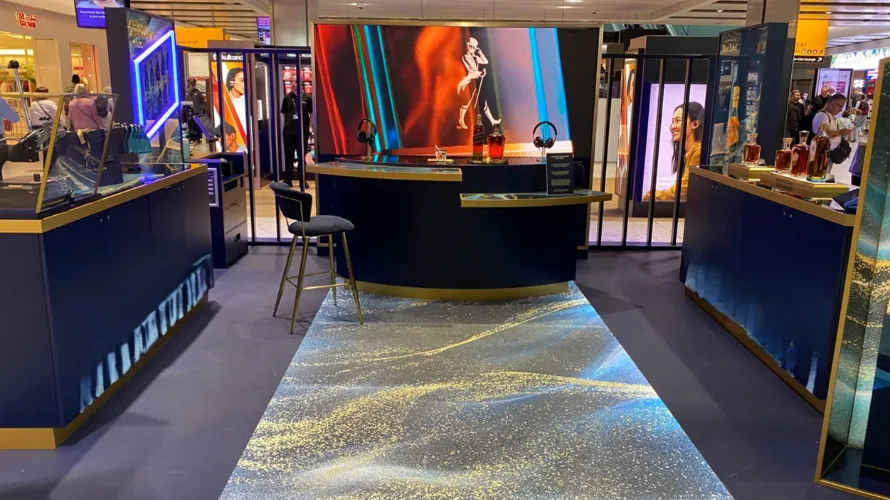Optimizing LED Video Walls for On-Camera Applications
Using LED video walls for on-camera backgrounds, virtual production, or extended reality requires careful consideration of various technical aspects to achieve optimal performance. These aspects include content type, color representation, shooting distances and angles, lighting conditions, and potential reflections.
Understanding Pixel Pitch: A Critical Factor in On-Camera Performance
One of the primary factors to evaluate when choosing an LED video wall for on-camera applications is pixel pitch. Pixel pitch refers to the distance between the centers of adjacent LED pixels and directly impacts how close a person or camera can be to the video wall without perceiving individual pixel outlines. In the context of on-camera use, lower pixel pitch values are crucial for several reasons:
1. Visual Clarity: A lower pixel pitch results in higher pixel density, which enhances the sharpness and clarity of images displayed on the video wall. This is particularly important for maintaining image fidelity in high-definition and ultra-high-definition filming environments.
2. Reduced Moiré Effect: Higher pixel densities help minimize the moiré effect—a visual interference pattern that can occur when filming detailed patterns or textures. Lower pixel pitch reduces the likelihood of moiré patterns appearing on camera.
3. Camera Distance Flexibility: With a finer pixel pitch, cameras can be positioned closer to the video wall without compromising image quality. This flexibility is essential for achieving desired framing and camera angles in various studio setups.
Considerations Beyond Pixel Pitch
While pixel pitch is critical, other factors also influence the suitability of an LED video wall for on-camera applications:
- Color Consistency: LED panels should offer high color uniformity and accuracy to ensure that colors appear natural and consistent on camera.
- Brightness and Contrast: Adequate brightness levels and contrast ratios are essential to maintain visibility and detail in varying lighting conditions, from controlled studio environments to outdoor settings.
- Refresh Rate and Scan Mode: Higher refresh rates and lower scan modes (such as 1/16 scan or 1/32 scan) contribute to smoother motion rendition on camera, reducing flickering or visible scan lines.
Tailoring LED Technology to Filming Requirements
Choosing the right LED video wall involves aligning technological capabilities with specific filming needs and preferences. Factors such as studio size, shooting style, and the complexity of on-screen content play pivotal roles in the decision-making process. Collaborating with experienced AV professionals can provide valuable insights and ensure that the chosen LED display meets both technical specifications and aesthetic requirements for on-camera applications.
Conclusion
In summary, when selecting an LED video wall for on-camera use in applications like virtual production or extended reality, prioritizing lower pixel pitch enhances performance and visual quality. By understanding the significance of pixel pitch alongside other technical considerations, filmmakers and production teams can effectively leverage LED technology to create compelling visual experiences that meet the demands of modern filming techniques.



